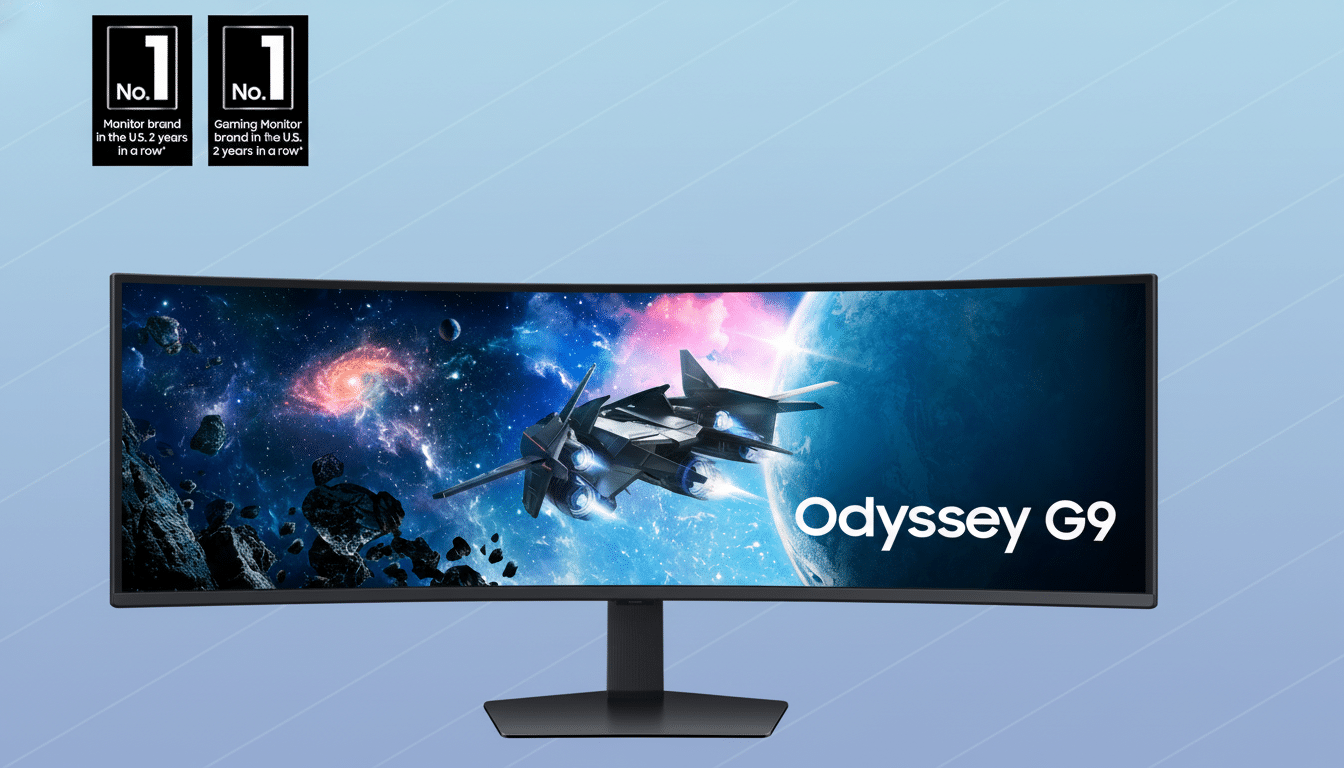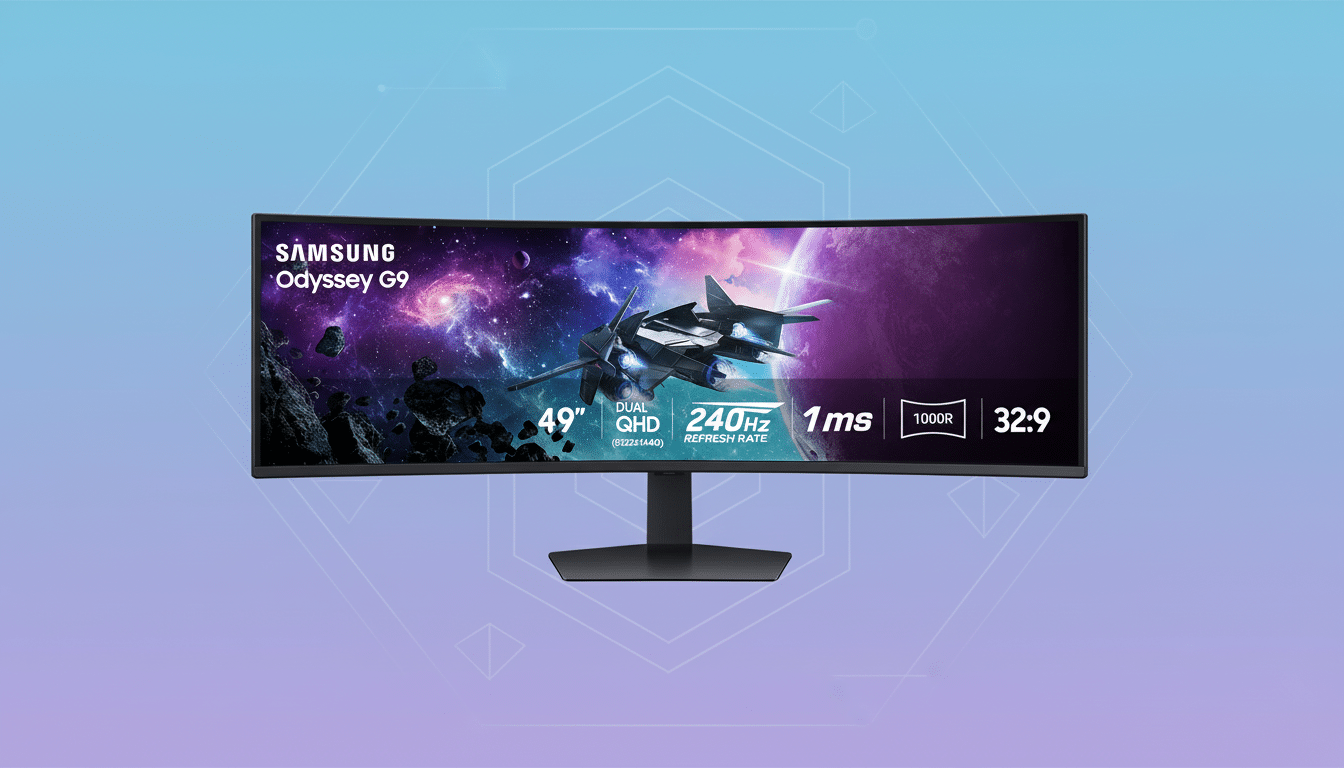One of Samsung’s most eye-popping gaming monitors just hit a budget-friendly price.
The 49-inch Odyssey G9 G95C is marked all the way down to $777.99 from an MSRP of $1,299.99, a $522 slash that suddenly makes this super ultrawide conceivable for many more gamers and creatives than before.

Why This Price Reduction Matters for More Buyers
Discounts on 49-inch panels of this quality don’t come around often, and push the G95C into a part of the marketplace usually reserved for four-figure price tags. Price history tracking and deal communities tend to reveal super ultrawides holding value quite well for the majority of the year, so watching it fall under $800 is interesting in its own right, and it stands as one of the lowest listed prices across major retailers in recent months.
For those who are hunting for a minimalist alternative to a dual-monitor setup, the savings are an added bonus. Rather than two quality 27-inch QHD screens and a mount, you get one seamless canvas that can now run at higher refresh, uniform color representation throughout the frame due to one single screen; and no middle bezels.
What You Get With the 49-Inch G95C Monitor
That’s a 32:9 DQHD panel delivering 5,120 x 1,440 resolution; the functional equivalent of two individual 27-inch 2,560 x 1,440 monitors jammed up against one another edge-to-edge. The more aggressive 1000R curve, like the one found in the Odyssey G9 and other Samsung displays but also other display makers such as Philips and AOC, wraps around your field of view more tightly than gentler arcs that aim to minimize eye motion across their extreme width and increase peripheral immersion.
Speed is the main headline: 240Hz refresh with a 1ms response time means games in which you are “competing” feel surgically snappy. Good (but not vital) FreeSync Premium Pro support helps to even out frame pacing and cut down on tearing, and in our experience, Adaptive-Sync compatibility tends to get along just fine with almost any GPU when configured properly.
HDR is also solid for an LCD in this class. Certified VESA DisplayHDR 1000 with a quoted 1,000-nit peak, game and movie highlights have the snap that many midrange ultrawides lack. It also means stronger contrast rendering, as well as providing some lift to darker scenes that can come off flat and mired under a gray haze with weaker backlights.
Quality-of-life extras round it out: the ergonomic stand adjusts in height, tilt and swivel; picture-by-picture and picture-in-picture modes (run two inputs simultaneously); Auto Source Switch+ smooths device changes; and ambient CoreSync/Core Lighting+ effects that can extend on-screen color into your wall for a more enveloping setup.

Real-World Gains in Games and Work Scenarios
Racing and flight sims are the things here. In titles like Assetto Corsa Competizione or Microsoft Flight Simulator, a 32:9 field of view offers more available track and cockpit visibility without forcing users to deal with the constraints of narrower (yet widescreen) fields of view. For strategy games and more immersive RPGs whose in-game UI and scenery accommodate the wider aspect ratios, you’ll reap the benefit of a larger UI while still enjoying an undisturbed scene with no bezel seam down its center.
Productivity sees a similar boost. Video editors can pin longer timelines while scrolling independently, and developers or analysts can pin multiple panes or spreadsheets next to one another. A single-panel setup allows for unified color calibration and fewer cables, which can be a real game-changer over an uneven dual-monitor desktop.
A Few Caveats to Consider Before You Buy
Running 5,120 x 1,440 at high frame rates is a demanding affair. To fully max out 240Hz in modern AAA games, you should plan to pair the G95C with a high-end GPU and tweak smart settings. Competitive shooters at lower detail settings may get closer to the ceiling; more cinematic single-player titles will probably fall well below that figure unless you bring some serious horsepower.
Some games don’t natively support 32:9. Many do, but there are some that will fall back to 16:9 with side pillars unless you use community fixes. Console gameplay usually comes with black bars for the same reason. Also factor in its physical footprint: at almost four feet across, you’ll need either a deep, solid desk or a strong arm mount to get the curve and viewing distance exactly right.
Bottom Line: Is the Odyssey G9 G95C Deal Worth It?
Offered at $777.99, the Odyssey G9 G95C puts super ultrawide, 240Hz gaming into a category that previously had demanded steeper compromise — or a bigger splurge.
If you’ve been putting off consolidating two screens into one or dying for wraparound immersion with that sweet spot of speed and HDR pop, this is the sort of sub-$800 window that doesn’t open every day. Get it while you can, then clear some space on the desk — this thing is built to commandeer all of it.

